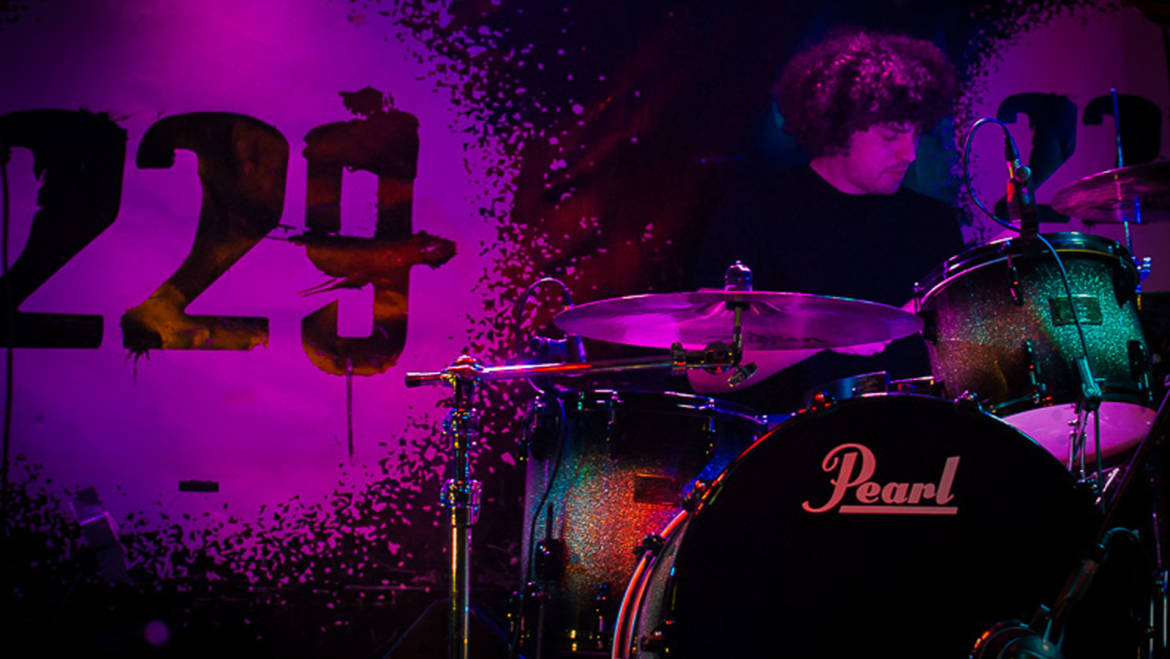It may be frustrating at first but you really do need to stick to the basics when you’re starting off and work your way up, in speed, in complexity and ability. Patience, time and commitment is the best way to improve, there is no quick fix for anything.
And that’s not just for drumming it’s the same with anything in life, patience is key.
If you are bored when you are practising and it feels too easy then you are definitely doing something wrong! The great Bernard Purdie once said;
“I need people to know and understand that you never get tired of practice, you should never. You should be able to like what you do, have fun with it. When you have fun with it you can do anything because the whole picture, as far as i’m concerned. As a drummer you need to have fun. And when you go to do your job, please have fun! Enjoy what you do and definitely, definitely love it. Like I do, I LOVE IT! ” – Drumeo June 4th 2015
I believe it’s really important to push yourself out of your comfort zone. So don’t join 10 different rock bands playing the same style or genre in a slightly varying way as you’ll never grow as a player.
Play in as many different bands, ensembles, musicals and orchestras as you can.
Richard Strange once told me;
“You’ll find that there are two types of creatives. Though’s who say yes and the ones that say no.”
I’m always saying “yes!” and looking for new ways to push my creativity and playing by taking on new projects or exploring new routes with existing ones.
You’ll quickly find you don’t need to master a style or genre before you start finding different elements that become useful in various aspects of your practice routine and playing, whether that’s your own project or somebody else’s.
An example of where I’ve used this experimentation is with the band, Harpo Smith.
I’ve had rehearsals with Orlando where we’ve experimented with different styles, and genres and often ripped up an established arrangement of a song. You can always come back to it.
We decided to do this because we were trying to find a more interesting way of creating a groove that will hopefully get people moving during a gig.
To achieve this we wanted to try and avoid using the more obvious patterns and rhythms often found in modern rock and pop genres in western culture.
My instant thought was to try some infectious drum beats that you can’t help but dance to such as Reggaeton:
An Example of A Reggaeton Drum Groove:

The Reggaeton drum groove is a very catchy one but it really wasn’t working for the song we were working on. So I simply searched the internet for the next style that came to my head which was the Songo.
There are two main types of music from South America which are often lumped together under the vague term, “Latin Music”. Afro-Cuban and Brazilian music all developed individually, so it’s important to recognise the uniqueness of each individual style.
The majority of Afro-Cuban drum grooves have been adapted from the parts played by an entire percussion section.
That section usually consisted of a Conga player (conguero), a timbale player (timbalero) and a bongo bell player.
Hand percussion instruments are also often included such as the guiro, claves and maracas.
By having an understanding of the rhythms played on these instruments it allows one drummer to assume the role of many percussionists.
The Songo was the first Afro-Cuban style that had a drum part written for it with percussion parts being added later.
An Example of A Nontraditional Songo Drum Groove:
![]()
This nontraditional Songo groove felt like it sat well with the lyrics and guitar pattern Orlando was playing.
So we stuck with it and experimented with a variety of different tempos and voicing’s around the drums and cymbals.
I think it worked well because it’s a linear drum groove. This means there’s only one drum/cymbal or voice playing at a time.
This gives the drum groove a lighter sound leaving more audible space in the music to either leave silent or fill it up with another instrument.
How To Apply Creativity To Your Practice Routine
It’s extremely easy to get bored very quickly when you’re repeating the same piece of music over and over again in your practice routine.
And at times it feels like you are getting nowhere! We all hit these brick walls at some point.
I’ll show you how you can use a small musical phrase or even a whole piece of music and adapt it so it has multiple uses and applications for your practice routine.
Take this very simple two bars of notation for the snare drum:
![]()
There are many different ways in which you can utilise these simple bars in your practice routine and turn one boring line that you’ve practised over and over again into something different that pushes your ability further.
Here are a few variations of what you can do with these two bars of notation:
Here we’ll start with something extremely simply. All we have to do is to move the snare drum line to the bass drum.
![]()
And you don’t have to limit yourself to the bass drum you can move the original pattern anywhere around the drum kit to any drum, cymbal or even a cowbell or percussion instrument such as a shaker.
You can also use your left and right hands or feet to play different combinations of this rhythm.
The possibilities are only limited to your imagination.
In this example, we’ve kept the original rhythm on the bass drum with the addition of an 8th note or quaver note pattern on the hi-hats with a backbeat on the snare drum on beats 2 and 4.

In this example, we’ve moved the original rhythm back to the snare drum and we now have a ‘four on the floor’ or 4 bass drums on every beat of the bar in the foot.

In this example, we’ve moved the original pattern back down to the bass drum and added 16th notes or semiquavers onto the hi-hat.

In this final example, we’ve moved one hand to the ride cymbal and added a ‘walking feet’ combination between the bass drum and hi-hat feet.

So there you have it. In just a few short examples we’ve managed to change one boring piece of repetitive notation into something with endless applications around the drum kit.
It’s all down to your imagination and creativity.
How To Stay Creative
A teacher, mentor and good friend of mine once gave me this list of advice about how to stay creative that I’ve used and kept on my wall ever since he gave it to me.
30 WAYS TO STAY CREATIVE
MAKE LISTS
CARRY A NOTEBOOK EVERYWHERE
GET OUT OF YOUR COMFORT ZONE
WRITE ON A NEW INSTRUMENT
TRY FREE WRITING
TAKE PHOTOS
MAKE SOUND RECORDINGS ON YOUR PHONE
GET AWAY FROM THE COMPUTER
STOP BEATING YOURSELF UP
TAKE BREAKS
KNOW YOUR ROOTS
LISTEN TO NEW MUSIC
BE OPEN
SURROUND YOURSELF WITH CREATIVE PEOPLE
GET FEEDBACK
READ A BOOK
GET OUT OF THE HOUSE
PUT YOURSELF IN NEW SITUATIONS
GO AND SEE THE SORT OF BAND YOU HATE
COLLABORATE
DON’T GIVE UP
PRACTICE. PRACTICE. PRACTICE
ALLOW YOURSELF TO MAKE MISTAKES
GO SOMEWHERE NEW
WATCH FOREIGN FILMS
TAKE RISKS
BREAK THE RULES
DO MORE OF WHAT MAKES YOU HAPPY
READ A PAGE OF THE DICTIONARY
LISTEN TO OTHER PEOPLES CONVERSATIONS
CREATE A FRAMEWORK
STOP TRYING TO BE SOMEONE ELSE’S PERFECT
GET AN IDEA-WRITE IT DOWN
CLEAN YOUR WORKSPACE
FINISH SOMETHING
Don’t believe everything that people tell you – That’s thirty-four ways to stay creative!
Recommended Reading For Drummers
The New Breed – Gary Chester
The New Breed II – Gary Chester and Chris Adams
The Drummer’s Bible – Mick Berry and Jason Gianni
Recommended Reading For Any Musician
Modern Reading Text in 4/4 – Louis Bellson and Gil Breines
Odd Time Reading Text – Louis Bellson and Gil Breines
Teaching Rhythm – Joel Rothman’s

